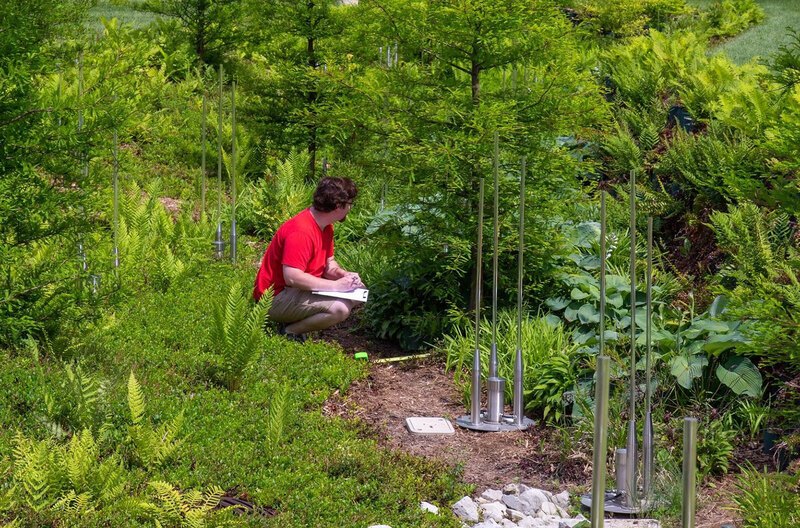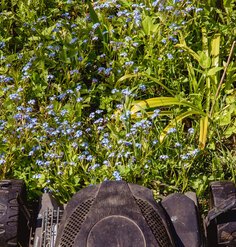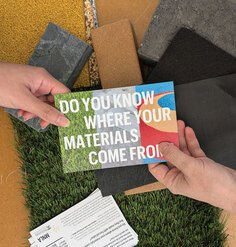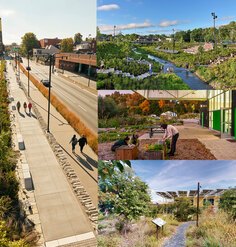From the Field: Functionality and Emotional Response
By Evan Gill, 2019 CSI Research Assistant, University of Michigan

Our team at the University of Michigan had an exceptional educational experience participating in LAF’s 2019 Case Study Investigation (CSI) program. Being able to contribute to the CSI program has challenged us and helped our team grow in a multitude of ways. Our team is affiliated with the University of Michigan’s landscape architecture program in the School of the Environment and Sustainability. This unique program has allowed us to participate in analyzing global challenges from a social and ecological sustainability point of view. The research is guided by the landscape architecture program and specifically research assistant, Evan Gill, and CSI Fellow, Professor Mark Lindquist. The team was fortunate enough to have assistance from two Doris Duke Scholars, Lauren Holmes and Julia Talamo. We are enthusiastic about sharing our research in the upcoming LAF Case Study Brief to be released this fall.
The focus of our case study is the four-acre Gerstacker Grove, located at the heart of the University of Michigan’s North Campus. Renovated in 2016, Gerstacker Grove was thoughtfully designed around the preexisting bell tower and time capsule exhibit. Previously, Gerstacker Grove was an underutilized and poorly planned campus space. There was much greenery, but pathways connecting the different academic buildings were not well arranged, and there was no space for gathering or socializing in general. Now, Gerstacker Grove includes a variety of new features that fix the previous issues while providing new environmental, social, and economic services.
Throughout our study, we have discovered many relationships between the functionality and emotional responsiveness for Gerstacker Grove. Centering our data collection on the experiences people have with the landscape helped us to understand better what contributes to a successful project. Participating in the CSI program has allowed us to provide recognition and visibility to the importance of spatial analysis and environmental understanding through interactive landscapes. This project is aimed to help understand if the construction of Gerstacker Grove has transformed a natural landscape to one that is accessible to people. Along with open public access, runoff water management strategies, and increased diversity index, it is also crucial to take into consideration how this can help other landscapes achieve their highest potential.
The landscape observed has numerous aspects for human interaction such as the volleyball court, swings, and accessible green spaces to enjoy. CSI allowed us to understand the working relationship between physical space and people. Our team was pleasantly surprised to learn how all the connections between carbon sequestration and plant biodiversity can play a role in our experiences with landscapes. This part of our data collection was all about covering user perceptions to help analyze values for landscapes that could increase appreciation and community engagement. This provides available data for the assessment of the project’s social benefits. Our team is also analyzing survey data on these factors in order to make a more direct comparison of user perception.
As our team nears the end of the CSI program, we look forward to collecting, documenting, and analyzing our data for the Gerstacker Grove project. Interpreting this data can help communication between firms and people on what sets unique and excellent landscape architecture apart. Hopefully, as the project continues, we can continue to learn more about how to make landscapes more engaging to increase environmental and social understanding of landscape architecture.
CSI Team: Mark Lindquist, PhD, ASLA, & Evan Gill
Project: Gerstacker Grove, Ann Arbor, Michigan
Landscape Architect: Stoss Landscape Urbanism
This CSI Participant update was written in July 2019.
Any opinions expressed in this article belong solely to the author. Their inclusion in this article does not reflect endorsement by LAF.











